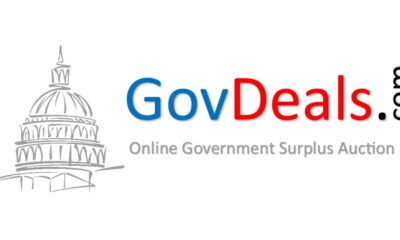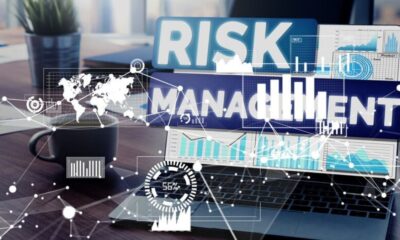Business
Compliance: Navigating the Path to Business Success

In today’s complex business landscape, compliância has emerged as a cornerstone of organizational success. But what exactly does compliance entail? At its core, compliance refers to the adherence to laws, regulations, guidelines, and standards relevant to a particular industry or jurisdiction. Whether it’s financial regulations, data privacy laws, or industry-specific standards, compliance plays a vital role in ensuring that organizations operate ethically and responsibly.
Types of Compliância
Compliance comes in various forms, each tailored to meet the unique requirements of different sectors and jurisdictions. Regulatory compliance involves adhering to laws and regulations set forth by governmental bodies, such as tax regulations or environmental laws. Industry-specific compliance, on the other hand, pertains to standards and guidelines established within a particular sector, such as healthcare or finance. Additionally, organizations often implement internal compliance measures to align with their own policies and procedures.
The Significance of Compliance
The importance of compliance cannot be overstated. Failure to comply with applicable laws and regulations can result in severe consequences, including legal penalties, fines, and reputational damage. Beyond mitigating risks, compliance also fosters trust and confidence among stakeholders, enhancing an organization’s reputation and credibility. Moreover, effective compliance practices promote operational efficiency by streamlining processes and minimizing disruptions.
Key Components of an Effective Compliance Program
Establishing an effective compliância program requires a multifaceted approach. Key components include developing comprehensive policies and procedures that outline compliance requirements and expectations. Equally important is providing ongoing training and education to ensure that employees understand their roles and responsibilities. Regular monitoring and auditing processes help identify areas of non-compliance, while robust reporting mechanisms enable timely resolution of issues.
Challenges in Maintaining Compliance
Despite its importance, maintaining compliance can be challenging for organizations, particularly in an ever-evolving regulatory landscape. Keeping up with changes in laws and regulations requires constant vigilance and resources. Additionally, cultural and organizational barriers may impede compliance efforts, such as resistance to change or lack of buy-in from leadership. Resource constraints, including budgetary limitations and staffing shortages, further complicate compliance initiatives.
Best Practices for Ensuring Compliância
To overcome these challenges, organizations can adopt best practices to strengthen their compliance programs. Conducting regular risk assessments helps identify potential areas of non-compliance and prioritize mitigation efforts. Clear communication channels facilitate the dissemination of compliance-related information throughout the organization, fostering a culture of compliance. Taking a proactive approach to addressing issues allows organizations to prevent compliance violations before they occur.
The Role of Technology in Compliance
Advancements in technology have revolutionized the way organizations approach compliance. Automated compliance management systems streamline processes and ensure consistency in compliance efforts. Data analytics tools enable organizations to identify patterns and trends, facilitating proactive risk detection and mitigation. By leveraging technology, organizations can enhance the effectiveness and efficiency of their compliance programs.
Case Studies: Compliance Success Stories
Numerous companies have achieved success by prioritizing compliance and implementing robust compliance programs. For example, Company X, a global financial institution, implemented a comprehensive compliance framework that enabled it to navigate complex regulatory requirements seamlessly. By investing in technology and talent, Company X not only avoided costly penalties but also enhanced its reputation as a trusted and responsible corporate citizen.
Conclusion
compliância is essential for organizations seeking to thrive in today’s competitive business environment. By adhering to laws, regulations, and industry standards, organizations can mitigate risks, enhance their reputation, and drive operational excellence. While maintaining compliance poses challenges, adopting best practices and leveraging technology can help organizations overcome obstacles and achieve compliance success.
FAQs
Why is compliance important for businesses?
Compliance is crucial for businesses as it ensures adherence to laws, regulations, and standards, mitigating legal risks and fostering trust among stakeholders.
What are some common challenges in maintaining compliance?
Common challenges include keeping up with regulatory changes, overcoming cultural barriers, and addressing resource constraints.
How can technology help organizations improve compliance efforts?
Technology enables organizations to automate compliance processes, streamline operations, and enhance risk detection through data analytics.
What are the consequences of non-compliance?
Non-compliance can result in legal penalties, fines, reputational damage, and operational disruptions, which can impact the long-term viability of an organization.
What steps can organizations take to enhance their compliance programs?
Organizations can strengthen their compliance programs by conducting regular risk assessments, providing ongoing training and education, and fostering a culture of compliance throughout the organization.
Business
Michael Zimmerman and the Story of electronicshunt.com

It certainly isn’t a stretch to say that today’s world is dominated by electronics. It seems like no matter what you do, you need some sort of gadget to do it properly. Whether it be doing work or play, everything that we do these days requires the best electronic gadgets to be at your disposal. A particular niche of note is audio equipment. Everyone is always on the lookout for the best way to listen to music, movies, and more.
I have a long history working with electronics, and audio products specifically, which prompted me to throw my hat in the ring and start electronicshunt.com.
My Background/What Motivated Me To Start A Site
Anybody who can do a cursory Google Search can easily find that there are thousands of different affiliate sites out there selling the same products that I am, so what motivated me to start electronicshunt.com? I have a genuine passion for audio products. I spent much of my life working for companies (such as Harman Consumer Group, DIRECTV and Comcast), where I both sold consumer home electronics components and trained consumers in their use.
My passion began early as I developed an intense fascination with electronics during childhood. By high school, I would buy all sorts of home audio equipment that I could afford like receivers, speakers, turntables, cassette decks, etc. to compare the sound quality and to tinker with them to produce the most stunning high fidelity sound. I was a fan of both digital readout and analog dial receivers as well. I even
stumbled across several old tube quad receivers that I had to have and really enjoyed
the warmth and power of the sound quality they reproduced.
In college, I refined my interests and built on my passions even further and to go into audio technology. I obtained a degree in commercial music and hoped to make it big in the music industry. I had become a manager of several local jazz performing artists in the Atlanta, GA music scene, even procuring one a recording contract with an Independent music label in 1991. While that venture didn’t quite pan out to the level I was hoping for. I gained some valuable experience that has helped me in every endeavor since these crucial learning years.
My online career started off when I began reviewing a few products that I myself happened to enjoy using (a pair of Sennheiser headphones for anyone wondering) and before long I was writing a ton of different reviews. There was no shortage of audio products to review and different niches to explore.
However, I didn’t immediately go straight towards being an Amazon only business. Over the years I did try to experiment with the various passive income business models.
Anyone who is familiar with online businesses will no doubt know what I am talking about. I tried a lot of things ranging from creating YouTube videos to email marketing, and many other things in-between.
I found that none of them offered the fantastic opportunities that building an Amazon affiliate website does. Amazon affiliate marketing combines a low cost of entry with the unique ability to use Amazon’s already multi-million-dollar brand to your advantage. This is how I ultimately settled on creating sites like electronicshunt.com as the best method for generating a passive income.
The Concept and Ideas Behind electronicshunt.com
The concept behind electronicshunt.com is very simple, I use my expertise gained from many, many years of working in the industry to help people find the absolute best electronics on the market. I do this through a combination of informative product reviews and informational content.
I like to think that my expertise gives me a good insight into what the average consumer is looking for when it comes to audio products like headphones.
I try not to make my reviews cold and impersonal. Instead, I aim to make my product reviews as passionate and as informative as possible. I have stated before that I am not necessarily some recognized expert on this subject, however, I am someone who does have a deep passion for the products that I sell.
The way that I do my reviews isn’t how one would typically expect product reviews to be done. Rather than just writing one long, plodding review of a single product, I instead do multiple product reviews and compile them into a single article that is usually based around a theme (such as the best x under $xxx).
I also don’t just aim to review the absolute best products, I also look at ones that offer good value or that may be good for newcomers.
Challenges In The Market Today
I think when you are dealing with anything electronics based, but especially dealing with niche topics within the field, the biggest issue that you encounter is so many consumers who are interested in that sort of stuff already have pretty good ideas about what they want, and they aren’t particularly interested in reading any sort of generic reviews.
So, reaching these types of readers is always difficult, you can’t just phone it in. These types of readers really want quality content, and you have to work overtime to deliver the sort of content that gets them reading and that genuinely speaks to them. I definitely think that my time spent working directly in the audio industry is what sets me apart here.
Of course, I am also not immune to the struggles everyone else faces when it comes to building an affiliate site. I have to compete with the many competitors out there and I have to work to get eyes on my site. When it comes to overcoming this problem, all I can say is that the old adage of work smarter not harder is the best option. Posting tons and tons of content may work for some, but I find that the best way to build your successful affiliate site is to post the right kind of content.
You also can’t talk about the challenges of doing online business without talking about the one challenge that everyone has to face in the online world, which is SEO. At the end of the day, a large portion of your success is going to come down to whether your site gets ranked on Google. Mastering SEO is an essential step for anyone seeking to build a successful affiliate business.
Finally, there is also just the persistent reality that most affiliate sites don’t work out. They have a low cost of entry and each individual site doesn’t require a ton of work in the grand scheme of things, so individual sites failing isn’t too big of an issue overall, but it can be a disheartening challenge that needs to be overcome.
-+
The Opportunities In The Market
I don’t want to be all doom and gloom, I think a lot of people overly focus on the downsides of trying to start an affiliate site, especially one that is centred around selling products.
While there are plenty of pitfalls, I also think there are a lot of good opportunities for affiliate sites like mine that sell specific products.
First off, one of the biggest opportunities is found in the complete decline of brick and mortar stores, especially for anything related to technology or electronics. Someone starting an affiliate site like electronicshunt.com in say 2010, would have had to compete with stores like The Source, Best Buy, Radio Shack, and Circuit City. Nowadays, the vast majority of people looking to buy things like stereos, speakers, and headphones are going to go online, with most ending up on Amazon.
Because a lot of the products that I sell tend to be on the pricier side, a lot of consumers want to check reviews first. No one wants to spend $200 on a pair of headphones, only to find out that they absolutely hate them.
So, I have found that if you can write genuine, informative reviews, you can attract a surprisingly wide audience who are actively in the market to buy the products feature on your affiliate site.
Also, as my own site demonstrates, with the right niche, there are almost an endless array of products to feature, so you should never have to worry about not being able to have content.
My Recommendations For Others Looking To Break In
Much like there are tens of thousands of affiliate sites out there, there are also tens of thousands of sites offering you easy strategies and quick guides to break into the world of passive income. They often promise you quick returns. I find those guides, while not necessarily wrong, often give people unrealistic expectations and they often don’t have any useful tips, so let me remedy that by giving you some tips that I wish I had known when I started.
- An SEO Course Is Always Worth It. Without a doubt one of the best tips that I can give is to invest in a good SEO course or program. SEO is probably the fastest changing part of the affiliate business. Google is always changing how it ranks sites and a savvy website builder has to keep up with the latest trends. So, getting some professional guidance is well worth the price of entry.
- Plan For Success. Another really key piece of advice that I would offer is to plan for success. I don’t mean be cocky and assume that you are going to succeed, but rather, be prepared for how you will react when one of your sites eventually hits it big. Just because a site is successful doesn’t mean that you can rest on your laurels (not yet anyway), you have to put the site in a position to continue succeeding and you have to plan for your next successful website.
- Remember That You Are Playing The (Extremely) Long Game. It is a bit of a cliché but it is worth repeating that Amazon affiliate websites, while a great way to build a passive income, aren’t a fast road to success. It is going to take a while before you have the number of successful sites needed to have a true passive income, and that’s okay as long as you are prepared for that.
- It Should Be A One Man Show. While running an affiliate site business with a partner can seem like a tempting prospect since it splits the workload up, I would recommend against it. Early on there won’t be enough profits to really make it worthwhile to work with someone on creating the sites. Also, I find it can lead to a case of there being too many cooks in the kitchen. It is much better for there to be one single vision for the business and having someone else in the picture can make achieving that harder.
- Try To Be A Jack Of All Trades. Building affiliate sites and working through Amazon requires a lot of different skills. You have to be able to build attractive sites, write good content, and know how to get eyes onto your content. If you don’t think that you have these skills, don’t worry as there are a ton of different places that can help you out. Places like Warrior Forum are filled with helpful content that lets you learn and improve your skill set.
- Finally, Just Be Prepared To Work Hard. My final piece of advice may seem like an obvious one, but it is also something that needs to be stated repeatedly, which is that you have to be prepared to work extremely hard. Passive income businesses and activities like affiliate review sites are often sold as an easy way to generate money, but that is only true in the later stages. The early stages involve a lot of work and a lot of learning, so if you want to reap the rewards, you have to be prepared to put in the hours at the beginning.
Be sure and give us a look and read our top home audio gear reviews at:
Business
Crafting the Perfect Modern Home: Tips from BKCIANDRE

In the realm of high-end home furniture and interior design, BKCIANDRE stands out as a pioneer. Since 1996, they have been redefining spaces with their exquisite ceramic tables and customized kitchen cabinets. As a global manufacturer, BKCIANDRE has built a reputation for excellence in design and craftsmanship, making them a go-to choice for homeowners and designers alike.
The Art of Ceramic Tables
Ceramic tables have become a staple in modern home design, known for their durability, elegance, and versatility. BKCIANDRE’s ceramic tables are no exception. Their collection showcases an array of designs that blend seamlessly with any interior style, from minimalist to luxurious.
One of the standout features of BKCIANDRE’s tables is their easy maintenance. For those wondering how to keep their ceramic tables looking pristine, the answer is simple. Regular cleaning with a soft cloth and mild detergent is sufficient to maintain their shine. For more detailed care instructions, you can refer to this guide on Come pulire tavolo in ceramica.
Customizing Your Kitchen with BKCIANDRE
The kitchen is often considered the heart of the home, and BKCIANDRE understands the importance of this space. They offer customized kitchen cabinets that cater to the unique needs and preferences of each client. Whether you are looking for a sleek, modern design or a more traditional aesthetic, BKCIANDRE can create the perfect solution for your kitchen.
Their expertise in manufacturing and design is complemented by their diverse global partnerships. This allows them to source the finest materials and incorporate the latest trends and technologies into their products. As a result, BKCIANDRE’s kitchen solutions are not only functional but also stylish and innovative.
Global Reach and Partnerships
BKCIANDRE’s influence extends far beyond their manufacturing capabilities. Their global partnerships with designers, architects, and suppliers enable them to stay at the forefront of the industry. These collaborations ensure that they can offer the most current and high-quality products to their clients worldwide.
Their commitment to excellence is evident in every piece they produce, from the initial design concept to the final product. This dedication has earned them a loyal customer base and recognition as a leader in the home furniture and interior design sectors.
Conclusion
For those looking to elevate their home with high-end furniture and bespoke kitchen solutions, BKCIANDRE is the ideal choice. Their blend of innovative design, exceptional craftsmanship, and global expertise ensures that every piece they create is a masterpiece.
To learn more about their offerings and how they can transform your space, visit their website at bkciandre.com. Whether you are in search of the perfect ceramic table or customized kitchen cabinets, BKCIANDRE has the solution to meet your needs.
Business
Fintechzoom Hublot Spirit: The Future of Fintech is Here

Welcome to the cutting-edge world of Fintechzoom Hublot Spirit, where innovation meets sophistication in the realm of financial technology. In this digital age, Fintech has become a pivotal force driving change and efficiency in how we manage our finances. And at the forefront of this revolution is Fintechzoom Hublot Spirit – a game-changer that is reshaping the future of fintech as we know it. Let’s delve into how this groundbreaking platform is setting new standards and paving the way for a more streamlined and secure financial landscape.
What is Fintech and Why is it Important?
Fintech, short for financial technology, is the innovative use of technology to enhance and automate financial services. It encompasses a wide range of applications, from mobile banking and peer-to-peer lending to cryptocurrency and robo-advisors. The importance of fintech lies in its ability to improve efficiency, accessibility, and transparency in the financial sector.
By leveraging cutting-edge technologies like artificial intelligence and blockchain, fintech companies are reshaping traditional banking practices. This digital evolution is making financial services more convenient for consumers while driving competition among institutions to innovate their offerings.
Furthermore, fintech plays a crucial role in promoting financial inclusion by providing underserved populations with access to essential services. Through streamlined processes and lower costs, fintech solutions empower individuals and businesses to manage their finances more effectively. As the industry continues to evolve rapidly, embracing fintech is key for staying ahead in today’s digital economy.
How Fintechzoom Hublot Spirit is Revolutionizing the Industry
Fintechzoom Hublot is setting a new standard in the fintech industry by seamlessly combining cutting-edge technology with user-friendly design. This innovative platform offers a range of financial services that cater to the diverse needs of modern consumers.
Through its advanced algorithms and artificial intelligence capabilities, Fintechzoom Hublot Spirit provides personalized recommendations and insights to help users make informed decisions about their finances. By leveraging big data analytics, it can identify trends and patterns that traditional institutions may overlook.
One of the key ways Fintechzoom Hublot Spirit is revolutionizing the industry is through its emphasis on security and privacy. With robust encryption protocols and multi-factor authentication methods, users can rest assured that their sensitive information is well-protected.
Moreover, Fintechzoom Hublot Spirit’s intuitive interface makes it easy for even non-tech-savvy individuals to navigate complex financial transactions effortlessly. In essence, this platform represents the future of fintech – accessible, secure, and tailored to meet the evolving needs of today’s digital economy.
Features and Benefits of Fintechzoom Hublot Spirit
Fintechzoom Hublot Spirit offers a seamless user experience with its intuitive interface designed for both beginners and seasoned professionals in the fintech industry. The platform provides real-time data analytics, customizable dashboards, and advanced reporting tools to help users make informed decisions.
One of the key features of Fintechzoom Hublot Spirit is its AI-powered algorithms that can predict market trends with high accuracy, giving users a competitive edge in their investments. Additionally, the platform’s secure encryption technology ensures that sensitive information remains protected at all times.
Users also benefit from Fintechzoom Hublot Spirit’s automated trading capabilities, allowing them to execute trades efficiently and maximize their returns. With round-the-clock customer support and regular updates, users can stay ahead of the curve in the ever-evolving world of fintech.
Fintechzoom Hublot Spirit empowers individuals and businesses to navigate the complex financial landscape with confidence and precision.
Success Stories and Testimonials from Users
Have you ever wondered what real users have to say about Fintechzoom Hublot Spirit? Well, wonder no more! Many individuals and businesses have shared their success stories and testimonials, highlighting how this innovative platform has transformed the way they manage their finances. From seamless transactions to advanced security features, users rave about the convenience and efficiency of Fintechzoom Spirit.
One user mentioned how using Fintechzoom Hublot helped them streamline their payment processes, saving them valuable time and reducing errors significantly. Another testimonial praised the platform’s robust analytics tools, which provided invaluable insights into their financial performance. Users also appreciate the personalized support they receive from the dedicated customer service team at Fintechzoom Spirit.
These success stories demonstrate the tangible impact that Hublot is having on individuals and businesses alike. Ready to join the ranks of satisfied users? Experience it for yourself today!
The Future of Fintech with Fintechzoom Hublot Spirit
The future of Fintech with Fintechzoom Hublot Spirit is a promising landscape filled with endless possibilities. With cutting-edge technology and innovative solutions, this platform is revolutionizing the way we interact with financial services.
As we move forward, Fintechzoom Hublot will continue to lead the way in streamlining processes, enhancing security measures, and improving overall user experience. The integration of artificial intelligence and machine learning algorithms will further elevate the capabilities of this platform, making it more efficient and effective than ever before.
In an ever-evolving digital world, staying ahead of the curve is essential. Fintechzoom Spirit recognizes this need and is constantly evolving to meet the demands of tomorrow’s financial landscape. By embracing change and innovation, this platform ensures that users are always one step ahead in their financial endeavors.
Conclusion
Fintechzoom Hublot Spirit is not just a tool for financial transactions; it is a symbol of innovation and progress in the fintech industry. With its cutting-edge technology and user-friendly interface, Fintechzoom Hublot Spirit has revolutionized the way people interact with their finances.
As we look towards the future of fintech, it’s clear that Fintechzoom Hublot Spirit will continue to play a significant role in shaping the industry. Its features and benefits make it an indispensable asset for businesses and individuals alike, paving the way for more efficient and secure financial transactions.
So whether you’re a seasoned investor or a new entrepreneur looking to streamline your operations, Fintechzoom Hublot Spirit is here to help you navigate the complexities of modern finance with ease. Embrace the future of fintech with Fintechzoom Hublot Spirit – where innovation meets opportunity.
-

 Entertainment8 months ago
Entertainment8 months agoUnveiling the World of HDToday
-

 Technology8 months ago
Technology8 months agoUnveiling the Wonders of Teltlk Technology
-

 Business8 months ago
Business8 months agoUnlocking Opportunities with GovDeals – Liquidity Services Marketplace
-

 Technology8 months ago
Technology8 months agoÇebiti: Corporate Operations with an Integrated AI Platform
-

 Business8 months ago
Business8 months agoThe Ultimate Guide to High Risk Merchant Services
-

 Health8 months ago
Health8 months agoIlluminate Your Scans: Unveiling the Magic of Luminous Scans in Modern Imaging
-

 Health7 months ago
Health7 months agoExploring the Benefits of wellhealthorganic Home Remedies
-

 Entertainment8 months ago
Entertainment8 months agoRecord of the Mightiest Lord Chapter 1: Unveiling the Epic Saga










